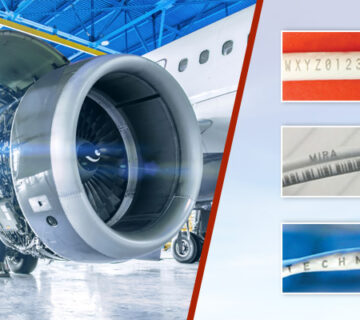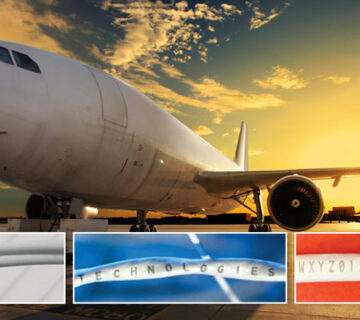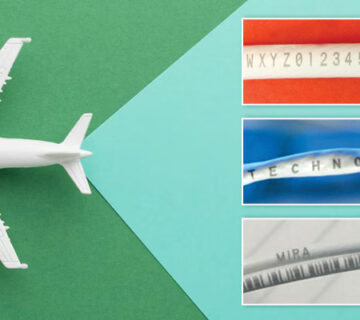Safety, dependability, and efficiency are of utmost importance in the aerospace industry. Every component utilized in an aircraft must be subject to exacting standards and testing. Every minute thing within an aircraft matters, and is impactful; and ever second counts! This is why it is preferable to mark and label each cable within an aeroplane. This guarantees easy identification, which lowers the likelihood of errors, and shortens the time invested during installation, repairs, and replacements. Laser marking has proven to be the go-to method for marking and labelling aviation wires because of its accuracy, durability, and versatility. The benefits and applications of laser marking for aircraft cables will be covered in the blog post below, with an emphasis on how it increases aerospace safety and efficiency.
Accuracy and precision
Laser marking technology provides unmatched accuracy and precision. The focused laser beam of the laser marker can create legible markings, including serial numbers, part numbers, barcodes, and other identification information, ensuring proper traceability and facilitating easy identification of cables during assembly, maintenance, and inspections.
Non-contact and non-destructive process
Laser marking is a non-contact and non-destructive procedure, which means that the cable surface is not really touched by the laser beam. This reduces the possibility of the cable being harmed or distorted during the marking process, maintaining its structural integrity and electrical qualities. Laser marking ensures that the cable works at its best without jeopardizing safety because of its non-contact and non-destructive properties.
High-speed and efficient marking
Laser marking systems provide high-speed and effective marking capabilities, making them suited for high-volume manufacturing settings. Rapid and precise marking of several cables can shorten production times and increase overall effectiveness. This is especially important in the aerospace manufacturing industry since there are strict deadlines and production goals that must be met.
Durability and reliability
Aircraft cables are put through a lot of stress, including temperature changes, mechanical strain, and chemical exposure. Cables with laser markings show outstanding tensile strength and resistance to damage. Even in challenging conditions, they maintain their great legibility, guaranteeing long-term traceability and readability throughout the cable’s lifespan.
Compliance with industry standards
When it comes to component identification and traceability, the aerospace industry has stringent regulations and standards. Laser marking makes it possible to achieve these needs since it produces markings that are high-quality, permanent, and adhere to industry standards. This improves maintenance and repair procedures, and guarantees seamless integration of identified cables into the aircraft’s overall system.
Customization
There are a variety of marking possibilities and designs available with laser marking. To accomplish particular marking effects, such as surface etching or deep engraving, several laser parameters, including power, speed, and frequency, can be changed. This modification enables branding, identification, and customization of cable markings.
With all of the aforementioned qualities and advantages, laser marking has completely changed how aircraft cables are identified and tracked in the aerospace industry. Its accuracy, toughness, and adaptability make it a priceless tool for boosting security, dependability, and productivity. Laser marking ensures accurate identification, traceability, and adherence to industry standards by producing clear and permanent markings. Thanks to all of these advantages, laser marking will only become more and more important as the aerospace industry develops in terms of enhancing production, quality assurance, and maintenance procedures. Miracle Electronics offers job work for laser marking for aircraft cables on various cabling material types, including Polymide/Kapton, Dispersion coated Teflon, ETFE, FEP, Teflon, and Tefzel, ensuring precise and durable markings to meet any specific requirements.




